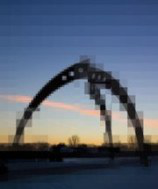Speaker
Summary
Recent advances in semiconductor technology allow to construct highly efficient and low noise pixel detectors of ionizing radiation. Steadily improving quality of front end electronics enables fast digital signal processing in each pixel which offers recording of more complete information about each detected quantum (energy, time, number of particles). All these features improve an extend applicability of pixel technology in different fields. Some applications of pixel technology especially for imaging in life sciences and astronomy will be shown (energy and phase sensitive X-ray radiography and tomography, SPECT, neutron radiography, electron microscopy, etc).
On the other hand a number of obstacles can limit the detector performance if not handled. The pixel detector is in fact an array of individual detectors (pixels), each of them has its own efficiency, energy calibration and also noise. The common effort is to make all these parameters uniform for all pixels. However an ideal uniformity can be never reached. Moreover it is often seen that the signal in one pixel can affect the neighbouring pixels due to various reasons (charge sharing, crosstalk). All such effects have to be taken into account during data processing to avoid false data interpretation.
A brief view into the future of pixel detectors and their applications including also spectroscopy, tracking and dosimetry will be given too. Special attention will be paid to the problem of detector segmentation in context of the charge sharing effect.
